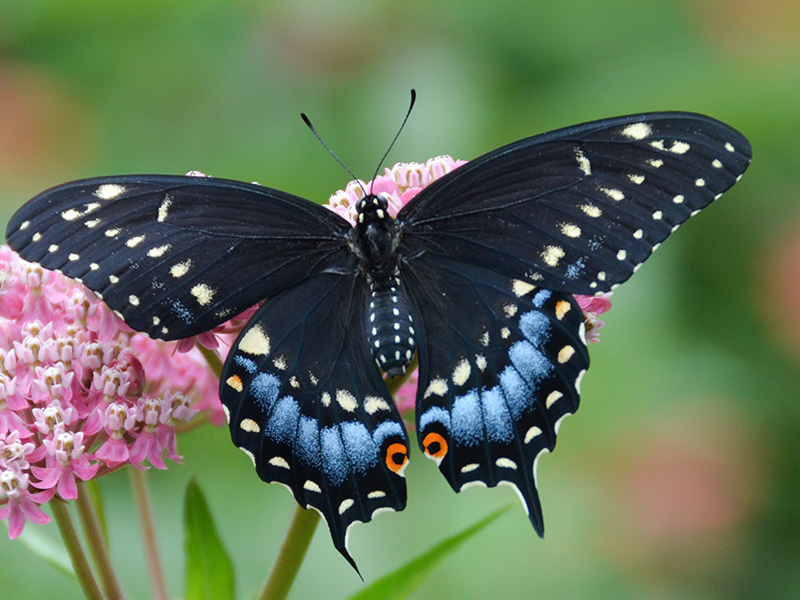
Butterflies have chewing mouth parts when they’re caterpillars, but sucking mouth parts when they’re butterflies.
We provide food for both these essential phases of a butterfly’s life.
For adult butterflies, we provide lots of nectar in spring, summer, and fall, including goldenrods.
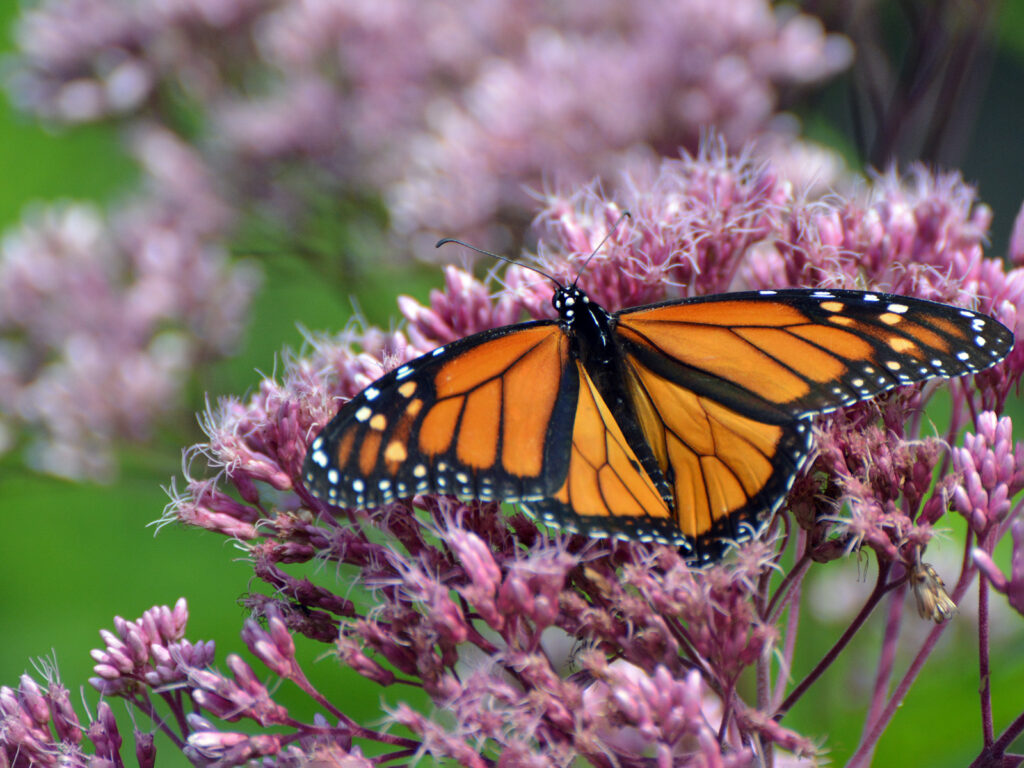
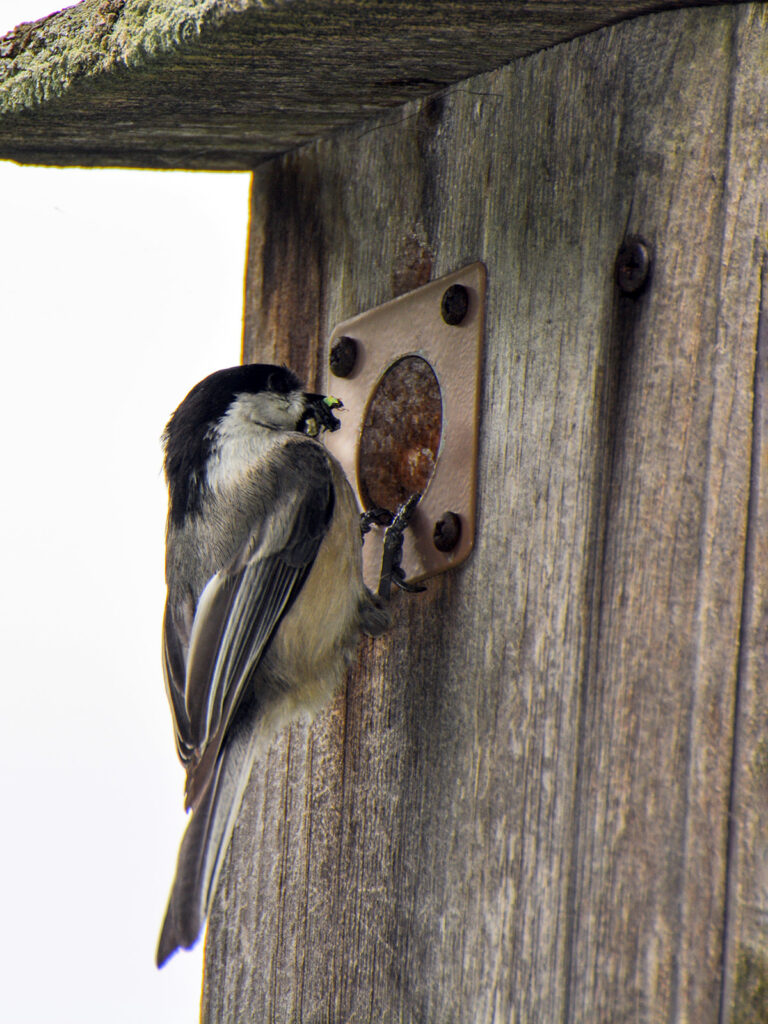
Just as important, though, we’ve planted lots of food for the caterpillars that will later become the adult butterflies. These are the larval host plants, sometimes called caterpillar food plants. Every species has specific plants they use in this stage of their lives.
No host plants for the caterpillar stage, means no butterflies, no moths, nor skippers! (AND a lot fewer birds as well, since caterpillars are a critically important food for birds to feed their young!)
Nectar plants for adult butterflies, skippers, and moths
You may find that different plants appeal to the butterflies in your yard, and if you live anywhere other than in Central New York, I encourage you to use plants native to your own ecoregion, since that’s what is best for your native wildlife.
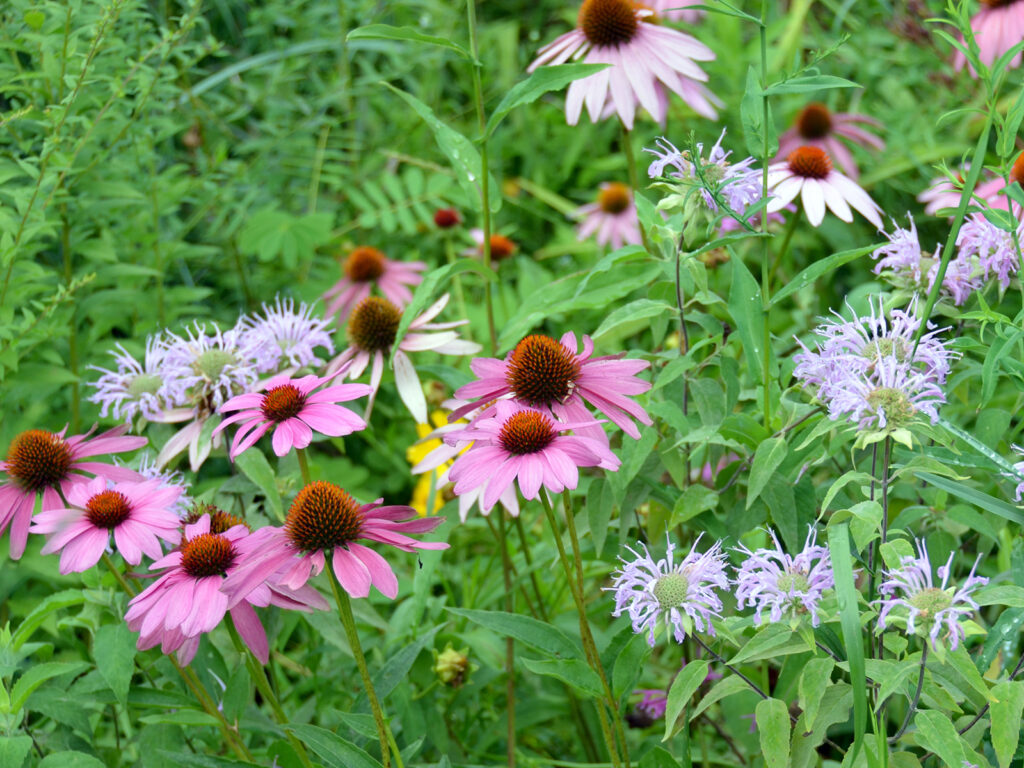
Native nectar plants
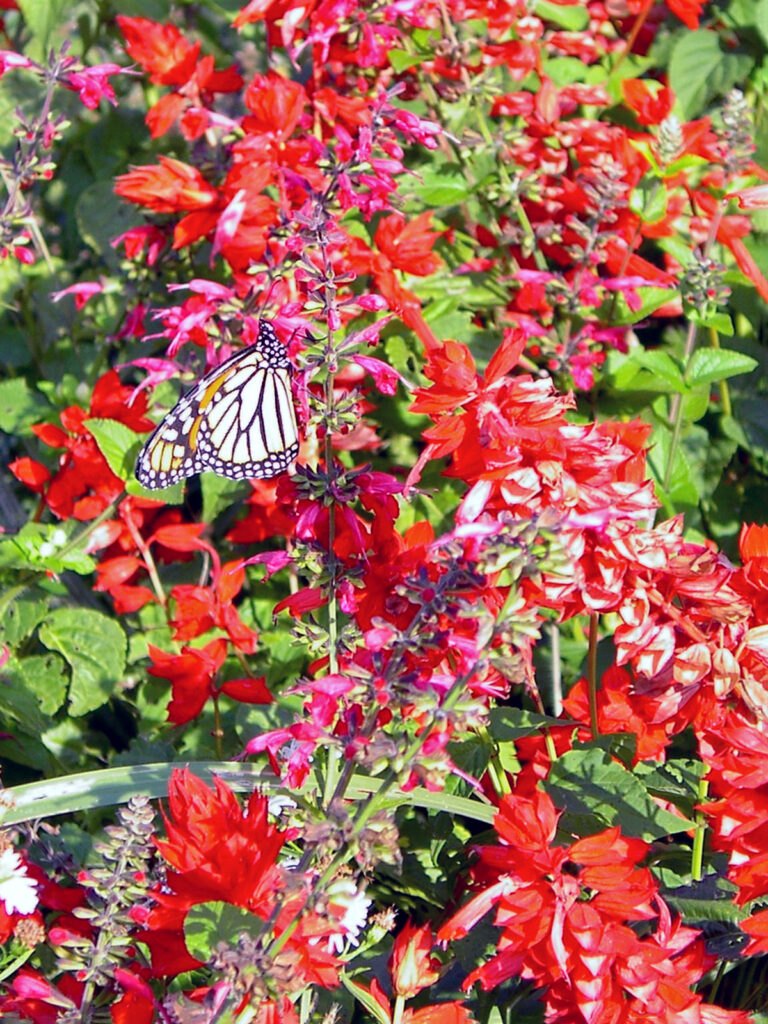
This monarch demonstrated to me that native plants are best even for nectar.
This bed of salvia was the last year we planted the typical salvia bedding plant — just “eye candy” for people — and the first year we planted the native Salvia coccinea. (This is actually native farther south from here, and is a cultivar called ‘Lady in Red.’ )
As I watched the monarch visiting this patch of hybrid and native salvias mixed all together in one bed, I noticed that it visited ONLY the native salvias. He knew that’s where the nectar was! (And who knows that if I had planted a salvia truly native to CNY and the plain species, not the cultivar, it would have found even more nectar!) I no longer plant this Southeast-native salvia, but I grow a multitude of Northeast-native plants.
Butterfly food that’s not from flowers
Like most people, at first we just thought about providing nectar-rich flowers as food for butterflies. Of course, this is a good thing to do, but we since have learned that some butterflies use other sources of food or even prefer other sources.
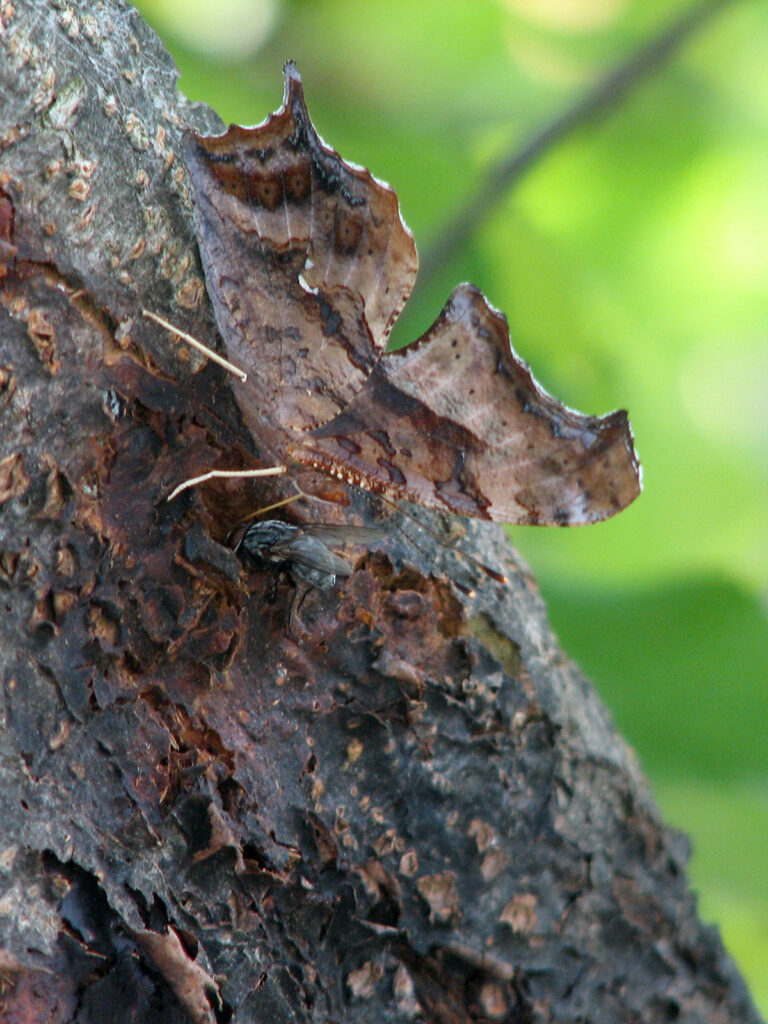
This question mark butterfly (note the question mark on his wing), for example, is drinking sap from our apple tree.
And as incongruous as it may seem, some beautiful butterflies eat rotting fruit … or even dung!
I’m not sure what this mourning cloak is eating in the vegetable garden, but probably it’s getting minerals dissolved in the soil.
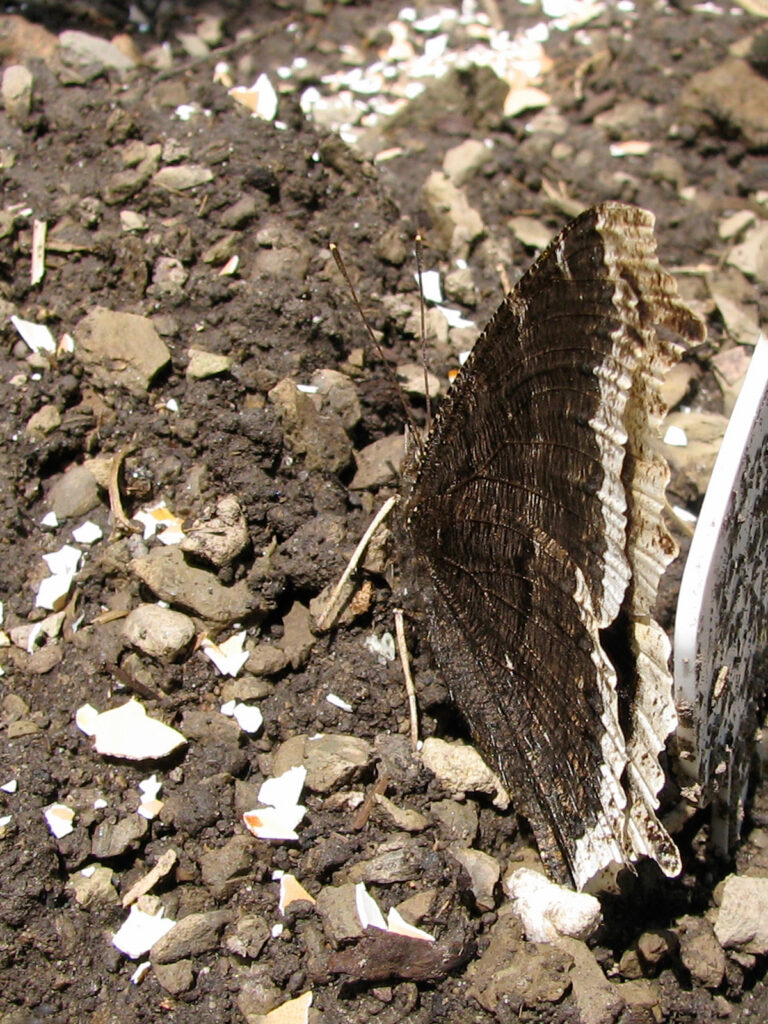
One NOT to plant: Buddleia aka butterfly bush
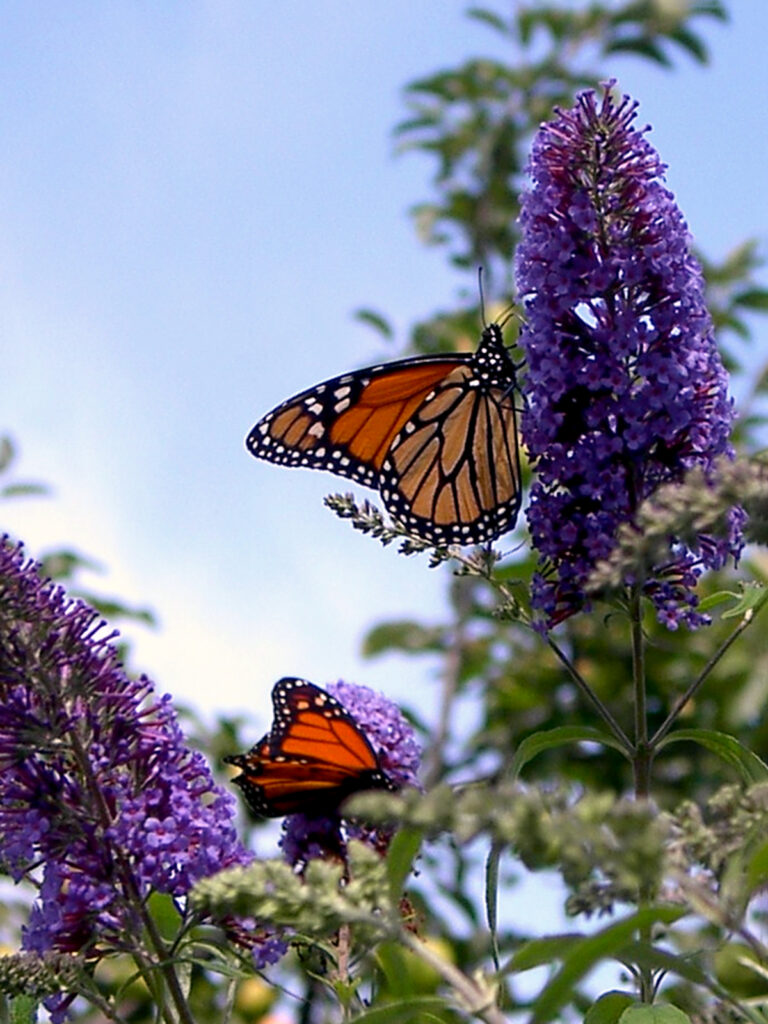
The non-native plant buddleia (sometimes spelled “buddleja”) is found on most all conventional lists of butterfly garden plants.
It certainly does attract butterflies to observe, BUT what is fun for humans — watching lots of butterflies — isn’t necessarily ultimately good for butterflies or for healthy ecosystems.
Many years ago, even before we started our habitat garden, one of the first things we bought was a butterfly bush. Doesn’t everyone?
We USED to have about a dozen buddleias, but when we learned that it’s a non-native invasive plant, we dug them out . Fortunately, there are lots of beautiful alternatives to buddleia (listed below) that are much healthier for the planet and for butterflies.
This isn’t just our idea. Planting butterfly-friendly native alternatives to buddleia is recommended by most knowledgeable experts. (See Resources section below)
Alternatives to buddleia
* New Jersey tea (Ceanothus americana)
* Buttonbush (Cephalanthus occidentalis)
* Sweet pepper bush (Clethra alnifolia)
* Joe-pye (Eupatorium spp.; Eutrochium spp.)
~ From The Xerces Society
* Swamp milkweed (Asclepias incarnata)
* Butterfly weed (Asclepias tuberosa)
* Blazing star (Liatris) esp. (L. ligulistylus)
* New York ironweed (Vernonia noveboracensis)
~ From The Nature Conservancy
* New Jersey tea (Ceanothus americana)
* Summersweet (Clethra alnifolia)
* Elderberry (Sambucus canadensis) or (S. pubens)
* Bush honeysuckle (Diervilla lonicera)
* St. John’s wort (Hypericum spp.)
* Sweetspire (Itea virginiana)
* Sourwood (Oxydendrum arboreum)
* Pinxterbloom azalea (Rhododendron periclymenoides)
* Meadowsweet (Spiraea spp.) (NOT Japanese spirea)
* Snowberry (Symphoricarpos spp.)
* Viburnum (Viburnum spp.) (Choose NATIVE viburnums)
* Bottlebrush buckeye (Aesculus parviflora)
* American beautyberry (Callicarpa americana) (Choose a NATIVE variety)
* Wild Hydrangea (Hydrangea arborescens)
~ From Native Plant Trust (formerly New England Wild Flower Society)
* Buttonbush (Cephalanthus occidentalis)
~ From Native Alternatives to Invasive Plants, by C. Colston Burrell, Janet Marinelli, and Bonnie Harper-Lore
Resources
- National Wildlife Federation:
- Native Plant Finder – EXCELLENT! Includes top caterpillars etc that use each plant!
- Keystone native plants for Ecoregion 8 – includes most of US east of Mississippi
- Native Plant Finder – EXCELLENT! Includes top caterpillars etc that use each plant!
- Choose Natives:
Butterfly bush (Buddleia)
- Garden for Wildlife:
- Invasive.org:
- Butterfly Bush – Weed of the Week (a PDF file)
- PennState Extension:
- BONAP: (“Native” range is green; “Non-native/invasive” is blue)
- Buddleja species (also spelled “buddleia”)
- Rodale’s Organic Life:
- Toronto Gardening All Year Round:
